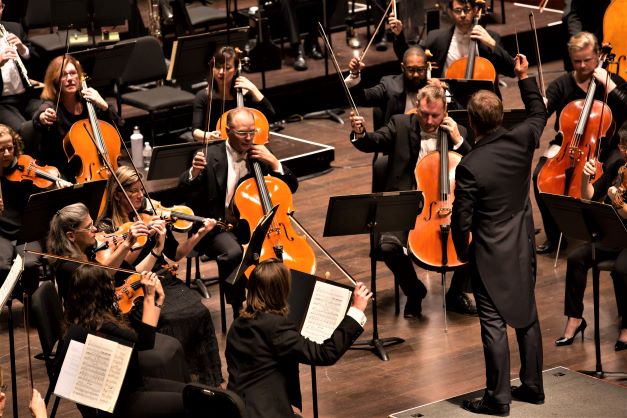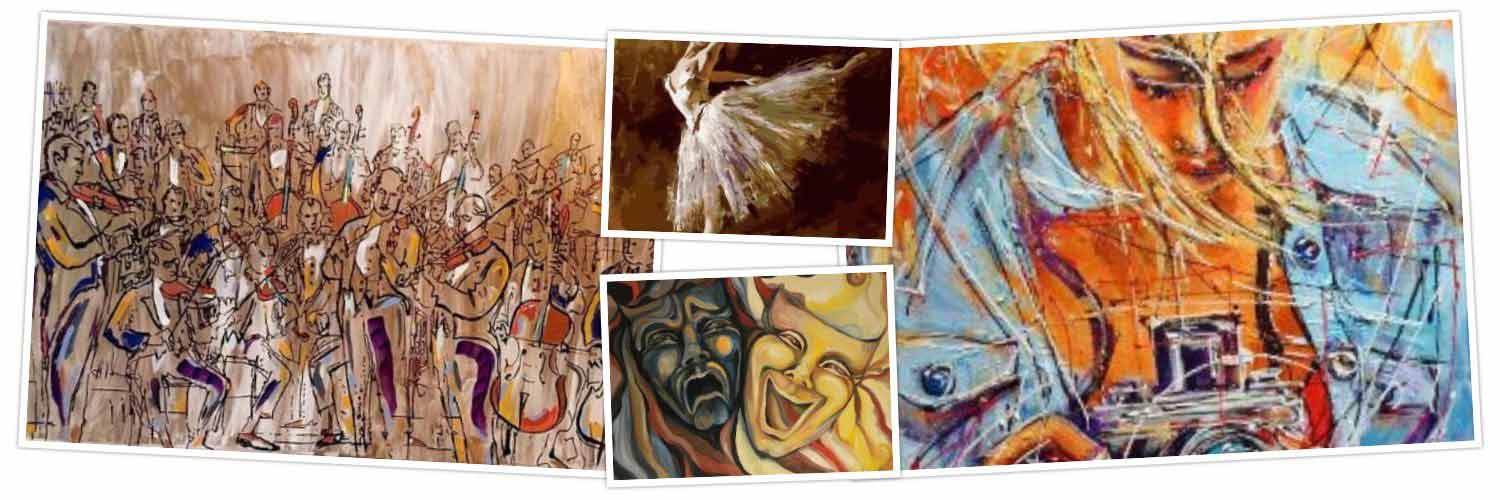The Symphony Faces Another Crisis
By JASMINA WELLINGHOFF, Editor
The musicians of the San Antonio Symphony have recently reached out to the press to spread the word about a new crisis facing our home symphonic orchestra. According to their release and conversations we had with musician representatives, the board and management of the nonprofit organization intend to cut 30 musician positions from the present 72, hoping to convert them into part-time positions. And the annual salary for the remaining orchestra members would be reduced from roughly $36,000 to $24,000.
The move to reduce the size of the orchestra threatens the artistic integrity of the symphony, noted Mary Ellen Goree, chair of the Musicians of the San Antonio Symphony, and a principal second violin of the ensemble. She pointed out that the affected players will not only lose income but also health insurance for themselves and their families, and that they most likely will leave San Antonio.
“Why would they stay!? They came here for one job. They are not going to stay for a lesser job than the one they accepted and moved to San Antonio for,” said Goree. “The other thing is that San Antonio already has musicians – we call them extras – who are engaged to replace someone or when the orchestra needs additional players.”
To turn the situation around, the musicians have suggested a wide-reaching fundraising campaigns in which they would like to participate.

“There obviously needs to be an aggressive fundraising campaign and we have been urging that,” said Goree. “It’s flabbergasting to me that the Symphony Society hasn’t been beating the bushes long before now to engage in such a campaign. Other orchestras managed to raise money during the pandemic. Of course, the pandemic has been distractive for everybody. But if there’s one thing that the pandemic has highlighted is the necessity for the arts in our lives. People have been turning to the arts to feed their souls, and we think that the Symphony is essential for the soul of San Antonio.”
Goree’s colleague, Daniel Taubenheim, has followed the situation in other cities that are comparable in size to San Antonio and cites numbers that tell a much more promising story. The Nashville Symphony, for example, paid its players $64, 000 in 2019, $16,000 during the pandemic year of 2020, and is now back to $60,000 for 2021, with the prospect of returning to $64,000 in 2022. And the Fort Worth Symphony had no pay cut at all, and continues to pay its members $57,000 per season.
According to Goree, many people in San Antonio would be happy to make a donation if asked. But most didn’t even know that the problem existed. “There’s a large pool of people who value the Symphony and would like to support it,” she said.
Asked how she and her colleagues envision this campaign, Goree admitted she was no expert in fundraising, but offered some observations. “I do know that many people enjoy meeting the musicians. During the last couple of years, we went out into the foyer during intermission to greet people, and people were excited to speak to someone they just saw on stage. So, it would be possible for musicians to go along on fundraising calls. Beyond that, I don’t know. I have no expertise in fundraising. All I can do is offer my help.”
For this report we also reached out to SAS board chair Kathleen Weir Vale, the woman who saved SAS a couple of years ago following a crisis that threatened to close the entire operation. She was on her way to a series of meetings, she said, and could not comment on ongoing negotiations, but she emphasized that everything is indeed still being negotiated. “Realizing the mission of our organization continues to be our goal,” she said. She also promised to call us later for further conversation.
As things stand now, the Symphony expects to launch its 2021-22 season Sept. 18 at 7 p.m. with a free outdoor concert on Main Plaza. Tobin Center concerts will resume Oct.29-30 with “Radiant Rachmaninov,” at 7:30 p.m. each day.
———————————————————————————————————————————-
We will publish updates as the situation develops and hopefully concludes with a happy-ish ending.

Though it saddens me that another local arts organization is once again gasping, I am not in any way surprised. Orchestras in this country, their attempts to attract younger, more diverse audiences notwithstanding, have long been slouching toward irrelevance and extinction. Please hear me out… Like opera, another Eurocentric art form going through an existential crisis in the U.S., this is an extraordinarily expensive art form. San Antonio is not San Francisco or New York or even Dallas, which has many culturally-focused philanthropists and corporations and foundations. We do not have the base to support such costly forms. I wholeheartedly support orchestral/instrumental programs for young people. But that relatively small base of younger-gen performers/listeners/supporters is not large enough to sustain the Symphony into its next iteration. I hope the SAS continues performing in smaller, ‘non-traditional,’ less expensive venues that can attract the right-sized audience that will never fill the Tobin Center. Some cities now have premier chamber orchestras that are more nimble–and relevant and widely supported–than large-scale orchestras whose communities cannot keep bloated organizations on life-support forever. The audience has spoken: Wagnerian-proportion orchestras are not the right fit for these economically volatile times, when communities are more focused on health care and education (in S.A., literacy is a persistent issue that urgently needs attention). That is not to say communities can’t multi-task and focus on arts & culture while also taking care of more immediate concerns. But that takes education and compelling demonstrations of commitment to diversity and growth. The old, ossified programming and presentation won’t survive in a vital, dynamic environment, one in which it’s easier, more convenient to access legendary, ‘world-class’ performances online than accessing expensive (tickets, parking, babysitters, set performance times) live performances, preferable though they might be. San Antonio does not have the benefit of a charismatic, collaborative, wide-embrace arts leader-spokesperson who understands and respects this community. I mean, if the venerable SW School of Art must partner with a major, state-funded academic institution in order to thrive, what will it take for local performing arts (which, to my mind, have never cultivated the sort of younger, more diverse support base that the visual arts have managed to foster) to also survive and thrive? The old philanthropic model that relied on a few super-wealthy patrons (RLB Tobin and his mother, Gilbert Denman, et al.) isn’t being replicated for this current era. What will arts patronage in San Antonio look like moving into the future?